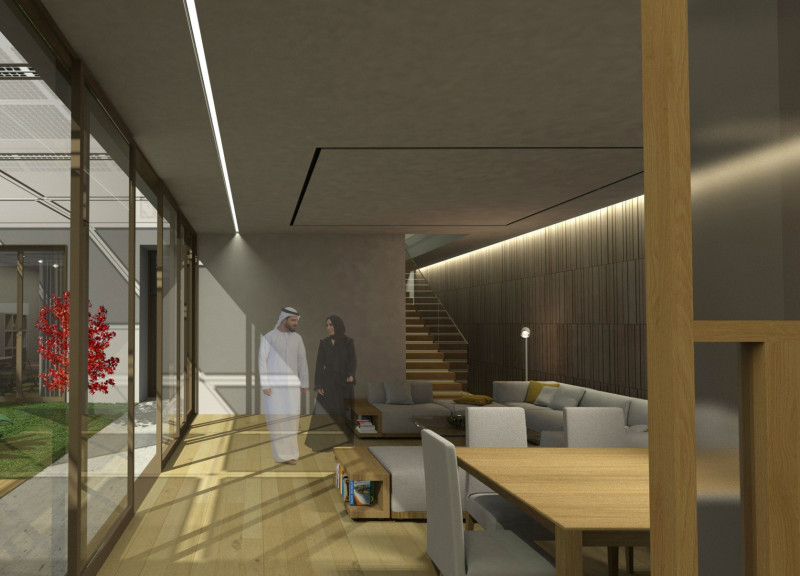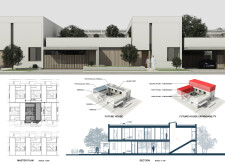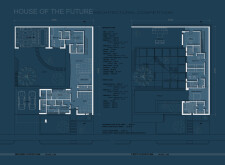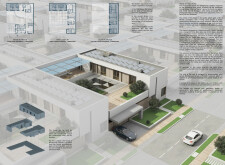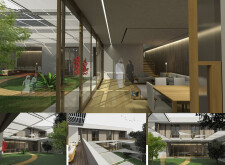5 key facts about this project
### Overview
Located in a modern urban context, the design is conceived to address evolving family dynamics and accommodate varying household sizes. The structure is characterized by its methodological approach to modularity, focusing on adaptability and sustainability through a phased expansion strategy. Each element of the architectural composition reflects a commitment to contemporary aesthetics while respecting contextual nuances and community engagement.
### Modular Expansion Strategy
The design employs a phased approach to expansion, allowing the residence to grow alongside its occupants:
- **Phase One** establishes a foundational three-bedroom layout.
- **Phase Two** introduces a second floor featuring four additional bedrooms.
- **Phase Three** encompasses the addition of two bedrooms on the first floor, providing flexibility as family needs change.
This modularity ensures that the home remains functional and relevant over time, positioning it as a responsive living environment.
### Integration of Sustainability and Materiality
Environmental considerations are integral to the design, which features rooftop photovoltaic panels that optimize solar energy capture while providing necessary shading. A centrally located green courtyard enhances natural cooling and promotes outdoor engagement. The material selection focuses on natural elements, including decorative plaster for the exterior, wood/polymer composite cladding for durability and aesthetic value, and expansive glass for ample sunlight, enhancing both energy efficiency and the sense of spaciousness within living areas.
The spatial organization carefully balances functional requirements with aesthetic considerations. Shared spaces are strategically located to foster interaction among family members, while private sleeping quarters are discreetly arranged to enhance personal retreat. This thoughtful configuration allows for a harmonious flow between communal and private spaces, contributing to an overall enhanced user experience.


